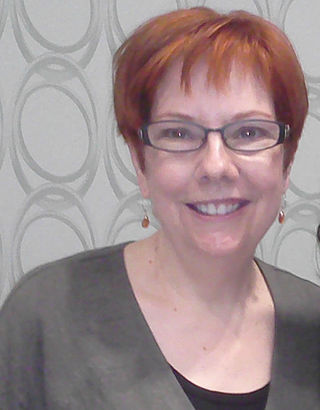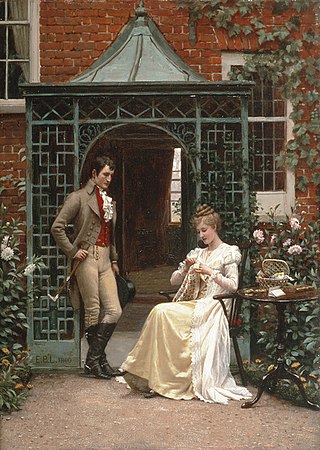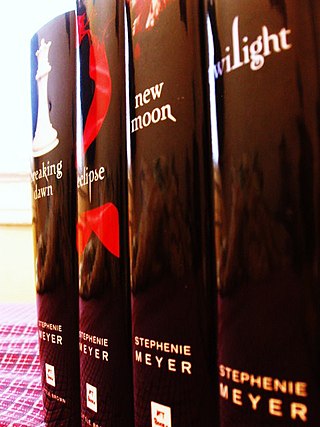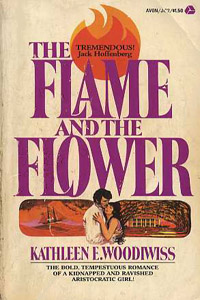Contemporary romance is a subgenre of contemporary and romance novels. This era of romance novels that were published after 1945 [1] and the Second World War. [2] Contemporary romance is generally set contemporaneously with the time of its writing. [3] The largest of the romance novel subgenres, contemporary romance novels usually reflect the mores of their time. Heroines in the contemporary romances written before 1970 usually quit working when they married or had children, while those novels written after 1970 usually have, and keep, a career. [4] As contemporary romance novels have grown to contain more complex plotting and more realistic characters, the line between this subgenre and the genre of women's fiction has blurred. [5]
Most contemporary romance novels contain elements that date the books, and the majority of them eventually become irrelevant to more modern readers and go out of print. [5] Those that survive the test of time, such as the works of Jane Austen are often reclassified as historical romances. [4] In a 2014 survey of romance readers, contemporary romance made up 41% of print and 44% of eBook sales compared to other romance subgenres. [6]
Contemporary romance novels may, in turn, be categorized into several subgenres, sometimes mixing with other main subgenres of romance novels.
Subgenres include:
The subgenre of contemporary romantic suspense consists of literary works that feature both elements of romance and suspense. [8]
This subgenre is also referred to as inspirational romance, often including themes and characters dealing with the Christian faith. [9]
The subgenre of contemporary paranormal romance consists of literary works that feature both elements of romance and the supernatural. [10]
This subgenre includes pregnancy, babies or children. One obstacle to making plots in this sense is to adapt to an ongoing increase in women who independently raise their children without any partner. [11] [ better source needed ]
Nobody's Baby But Mine by Susan Elizabeth Phillips is an example of this subgenre.[ citation needed ]
Medical romance novels may generally be regarded as a subcategory of contemporary romance, as well as of medical fiction, but has their type of setting and characters, although they yet can be as multifarious as any other subgenre. The setting usually involves a medical workplace, often the emergency department, but also airborne medicine, family medicine and obstetrics and gynecology.
Regarding characters, the central male protagonists (heroes) are almost always medical doctors, mostly emergency physicians, primary care physicians or surgeons, and sometimes obstetricians/neonatologists or pediatricians. The female protagonists (heroines) are mostly medical doctors but also often nurses, working in primary care, obstetrics/neonatology, training or residency programs, surgery, anesthesiology or emergency medicine. The doctors are almost always ingenious, the men usually tallish, husky and chiseled, while nurses are strong but caring.
Patients bring a lot of potential for subplots. They mostly get completely recovered, regardless of the severity of their injury or disease. Almost no plot, however, includes a doctor-patient or nurse-patient relationship,[ citation needed ] since it is a code for professional healthcare workers to avoid intimate relationships with patients, as a part of a professional doctor-patient relationship. [1]
This subgenre [12] is an important part of literature and has been prevalent since the mid-1700s [ citation needed ]. The lesbian romance genre is often a subgenre of broader genres such as BDSM romance, paranormal romance, coming-of-age romance, fantasy romance, and inspirational romance.
Contemporary romance novels have twice been chosen by Kelly Ripa to be featured in her Reading with Ripa book club. [13]
Genre fiction, also known as formula fiction or popular fiction, is a term used in the book-trade for fictional works written with the intent of fitting into a specific literary genre in order to appeal to readers and fans already familiar with that genre.
Romance may refer to:

Thriller is a genre of fiction with numerous, often overlapping, subgenres, including crime, horror, and detective fiction. Thrillers are characterized and defined by the moods they elicit, giving their audiences heightened feelings of suspense, excitement, surprise, anticipation and anxiety. This genre is well suited to film and television.

A romance novel or romantic novel is a genre fiction novel that primary focuses on the relationship and romantic love between two people, typically with an emotionally satisfying and optimistic ending. Authors who have contributed to the development of this genre include Maria Edgeworth, Samuel Richardson, Jane Austen, and Charlotte Brontë.

Jayne Ann Krentz, née Jayne Castle, is an American writer of romance novels. Krentz is the author of a string of New York Times bestsellers under seven different pseudonyms. Now, she only uses three names. Under her married name she writes contemporary romantic-suspense. She uses Amanda Quick for her novels of historical romantic-suspense. She uses her maiden name for futuristic/paranormal romantic-suspense writing.

Romance films involve romantic love stories recorded in visual media for broadcast in theatres or on television that focus on passion, emotion, and the affectionate romantic involvement of the main characters. Typically their journey through dating, courtship or marriage is featured. These films make the search for romantic love the main plot focus. Occasionally, romance lovers face obstacles such as finances, physical illness, various forms of discrimination, psychological restraints or family resistance. As in all quite strong, deep and close romantic relationships, the tensions of day-to-day life, temptations, and differences in compatibility enter into the plots of romantic films.
Urban fantasy is a subgenre of fantasy, placing supernatural elements in a contemporary urban setting. The combination provides the writer with a platform for classic fantasy tropes, quixotic plot-elements, and unusual characters—without demanding the creation of an entire imaginary world.

Regency romances are a subgenre of romance novels set during the period of the British Regency (1811–1820) or early 19th century. Rather than simply being versions of contemporary romance stories transported to a historical setting, Regency romances are a distinct genre with their plot and stylistic conventions. These derive not so much from the 19th-century contemporary works of Jane Austen, but rather from Georgette Heyer, who wrote over two dozen novels set in the Regency starting in 1935 until she died in 1974, and from the fiction genre known as the Novel of Manners. In particular, the more traditional Regencies feature a great deal of intelligent, fast-paced dialogue between the protagonists and very little explicit sex or discussion of sex.

Paranormal romance is a subgenre of both romantic fiction and speculative fiction. Paranormal romance focuses on romantic love and includes elements beyond the range of scientific explanation, from the speculative fiction genres of fantasy, science fiction, and horror. Paranormal romance range from traditional romances with a paranormal setting to stories with a science fiction or fantasy-based plot with a romantic subplot included. Romantic relationships between humans and vampires, shapeshifters, ghosts, and other entities of a fantastic or otherworldly nature are common.

Historical romance is a broad category of mass-market fiction focusing on romantic relationships in historical periods, which Byron helped popularize in the early 19th century.

Erotic romance novels are stories written about the development of a romantic relationship through sexual interaction. The sex is an inherent part of the story, character growth, and relationship development, and could not be removed without damaging the storyline.
Young adult romance literature is a genre of books written for teenagers. As defined by Romance Writers of America, a romance novel consists of a central love story and an emotionally satisfying ending. Early young adult romances feature a teenage protagonist, who is typically female, white, and middle-class, while books in the twenty-first century include a wider variety of protagonists.

Need is a series of young adult urban fantasy novels by American author Carrie Jones, beginning with the inaugural entry of the same name. The focus of the story is a teenage girl named Zara, who joins a struggle against a society of malicious pixies. As the books progress, Zara encounters a series of personal challenges, and bonds with new friends and romantic interests.
A romantic thriller is a narrative that combines elements of both the romance and thriller genres. The goal of romantic thrillers is to entertain audiences by evoking discomfort through moments of suspense, along with heightened feelings of anxiety and fear. While the concept of a thriller is more widely recognized, it often transcends the boundaries of a single genre. Thrillers can range from comedy and melodrama to adventure and romance, with all thrillers inherently blending different genres. The suspense that defines thrillers tends to pair more effectively with certain genres, such as crime, sci-fi, and romance, which allow for greater suspense than genres like screwball comedies or musicals.
Sharp Edges is a contemporary romance written by Jayne Ann Krentz. It was published in hardcover by Pocket Books in February 1998 and became Krentz's 20th consecutive novel on the New York Times Bestseller List.
LGBT romance is a genre within gay literature and romance fiction focused on same-sex characters who fall in love and have a homosexual or homoromantic relationship. The genre has met with increasing acceptance and sales from the 1980s onward. Bussel, in Publishers Weekly, notes that as of 2020, presses that specialize in LGBTQ romance, mainstream publishers, and booksellers are expanding their offerings and inviting a more diverse authorship.

Kristen Ashley is a New York Times and USA Today bestselling author of more than 75 books in 14 languages, with over three million copies sold. Two of her novels have been adapted into film.
Talia Hibbert is a British romance novelist. She writes contemporary and paranormal romance. Critics describe her as a writer of diverse narratives, with characters of varying race, ethnicity, body shape, sexual orientation, and life experience. She is best known for her 2019 novel Get a Life, Chloe Brown.